Embrace the Beauty: Iguazu National Park Activities Unleashed
Deep in the heart of South America lies a natural wonder that promises an awe-inspiring experience like no other. Located in northern Argentina, Iguazu National Park, a UNESCO World Heritage Site, boasts not only breathtaking landscapes but also a plethora of exhilarating activities that will leave you in absolute wonder. In this article, we will provide information and tips on visiting the park and we will explore the diverse range of Iguazu National Park activities.
Disclaimer: This post may include affiliate links. If you click one of them, I may receive a small commission at no extra cost to you.
A Glimpse Into History
The magnificent waterfalls in the park were first discovered by Europeans in 1542 when Spanish explorer Álvar Núñez Cabeza de Vaca set foot in this natural paradise. Iguazu National Park was declared a national park in 1934 to protect one of the greatest national landscapes in Argentina. This park is best known for the iconic Iguazu Falls, where the junction of the water flows mark the borders between Brazil, Argentina, and Paraguay.
In 1984, Iguazu National Park earned its prestigious UNESCO World Heritage Site status. It’s not difficult to see why. This natural sanctuary harbors one of the most diverse ecosystems on Earth. Its lush rainforests, vibrant flora and fauna, and of course, the awe-inspiring waterfalls, make it a site of unparalleled beauty and ecological significance. Visiting Iguazu National Park is a chance to connect with nature in its purest form.
The formation of Iguazu Falls, according to legend, is that a divine being had intentions of marrying a stunning woman named Naipí. However, she chose to escape with her human lover, Tarobá, aboard a canoe. Enraged by their defiance, the deity cleaved the river, giving rise to the waterfalls and dooming the lovers to an everlasting descent.
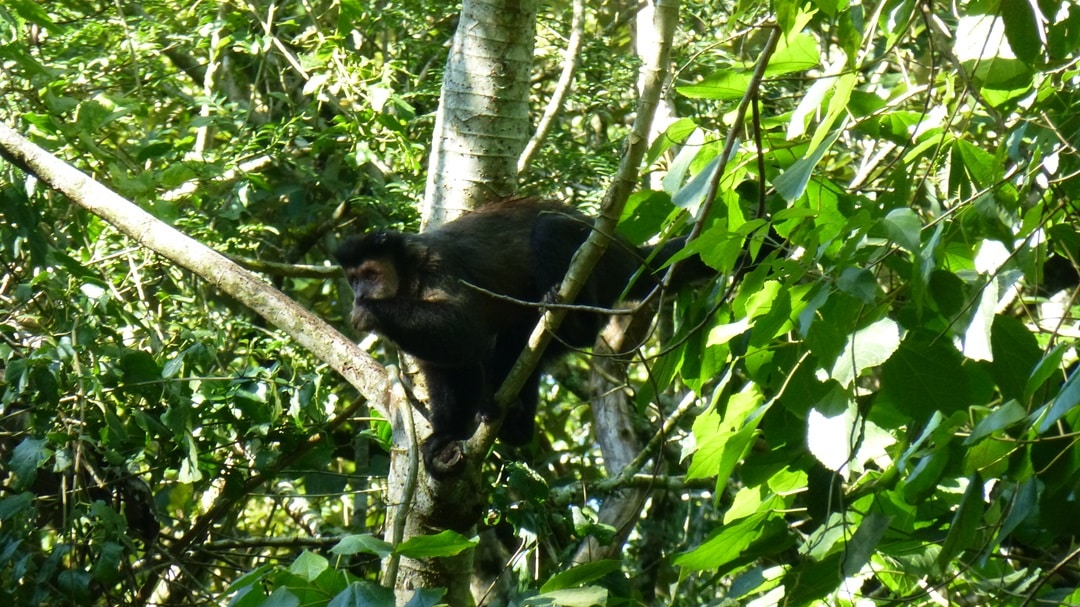
Guarani Tribes
During the colonial period, the Guarani people faced displacement and exploitation by European settlers, especially in the context of the Jesuit Missions, which sought to convert them to Christianity. Despite these historical challenges, some Guarani communities managed to maintain their cultural heritage and continue living in the Iguazu region.
They were skilled farmers who cultivated crops such as maize, yams, and cassava, and also relied on hunting and gathering. Their society was organized around extended families and clans, and they lived in communal settlements known as “tepuis” or “yvoty.”
The indigenous Tupi-Guaraní and Paraguas tribes regarded the waterfalls as a sacred location for burial ceremonies.
In the present day, there are still Guarani communities in the area, but their way of life has been significantly impacted by modernization and encroachment on their ancestral lands. Some have adapted to a more sedentary lifestyle, while others continue to practice traditional farming and maintain their cultural traditions.
Consider taking a Guarani Village Tour to learn more about this community.
5 Interesting Facts About Iguazu National Park
- Iguazu Falls sits in a horseshoe shape, made up of approximately 275 distinct waterfalls, making it the largest broken waterfall in the world
- Iguazu means “big waters”
- Iguazu Falls is taller and twice as wide as Niagara Falls, located in Canada
- Iguazu Falls has been featured in James Bond’s Moonraker, Indian Jones and the Kingdom of the Crystal Skull, and Black Panther
- Iguazu Falls Produces Electrical Energy for Argentina And Brazil
Iguazu Falls
Iguazu Falls extends approximately 2.7 kilometers (1.7 miles) in length. With an average flow rate of 1,746 cubic meters per second (61,660 cubic feet per second), Iguazu Falls showcases a spectacular display of both power and beauty. The most prominent among them is the awe-inspiring “Devil’s Throat,” a U-shaped cascade that plunges dramatically to a height of nearly 82 meters (269 feet).
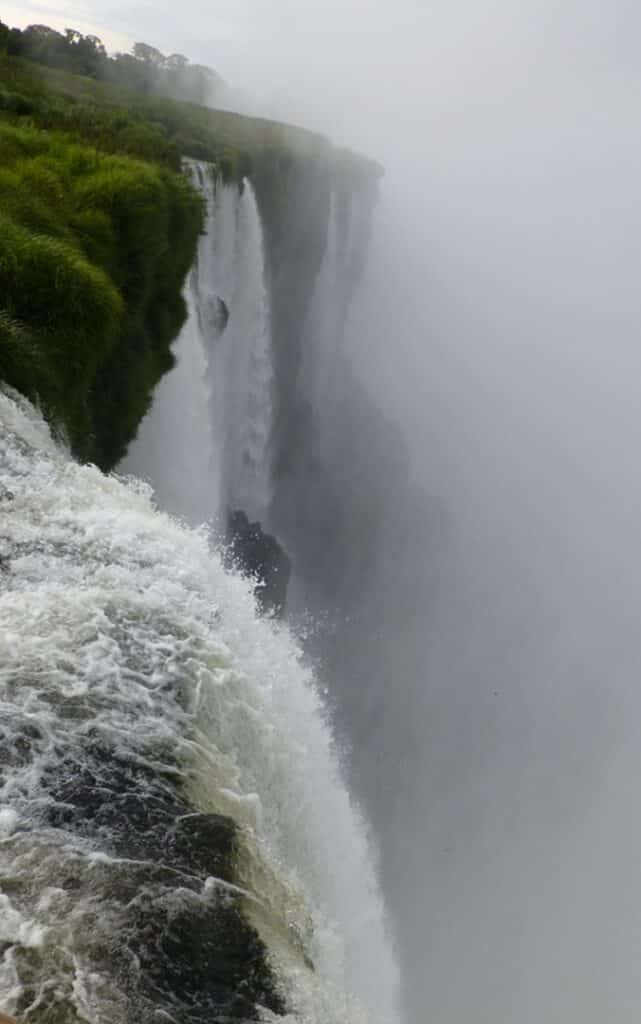
Why Visit Iguazu National Park
When I was planning my trip to Argentina, I decided early on in my planning that I had to add Iguazu to my Argentinian trip. It is a mesmerizing display of nature’s force and grace. Get ready to be amazed by the rich biodiversity of the park. From colorful butterflies to exotic birds to flora and fauna, you will encounter a fascinating array of wildlife, which I loved!
How Long Do You Need At Iguazu National Park
There are many activities at Iguazu National Park that will keep you busy and connected to nature. Plan to spend anywhere from 4 to 8 hours in the park, depending on what activities you choose to do. However, I recommend planning for a minimum of 2 days in Iguazu Falls to see everything at a relaxed pace.
Getting to Iguazu National Park
The inexpensive choice to get to the park from the town of Puerto Iguazu is to take the bus. Catch the bus at the Omnibus station or at the “Hito Tres Fronteras” (Three Borders Landmark). The buses run every 30 minutes and will cost you around $1US.
You can find taxis around the city center if you want to use that option to get to the entrance to the park. The cost will be around $20US.
If you take a guided tour to Iguazu Falls, which I highly recommend, then a pick up and drop off at your hotel are normally included.
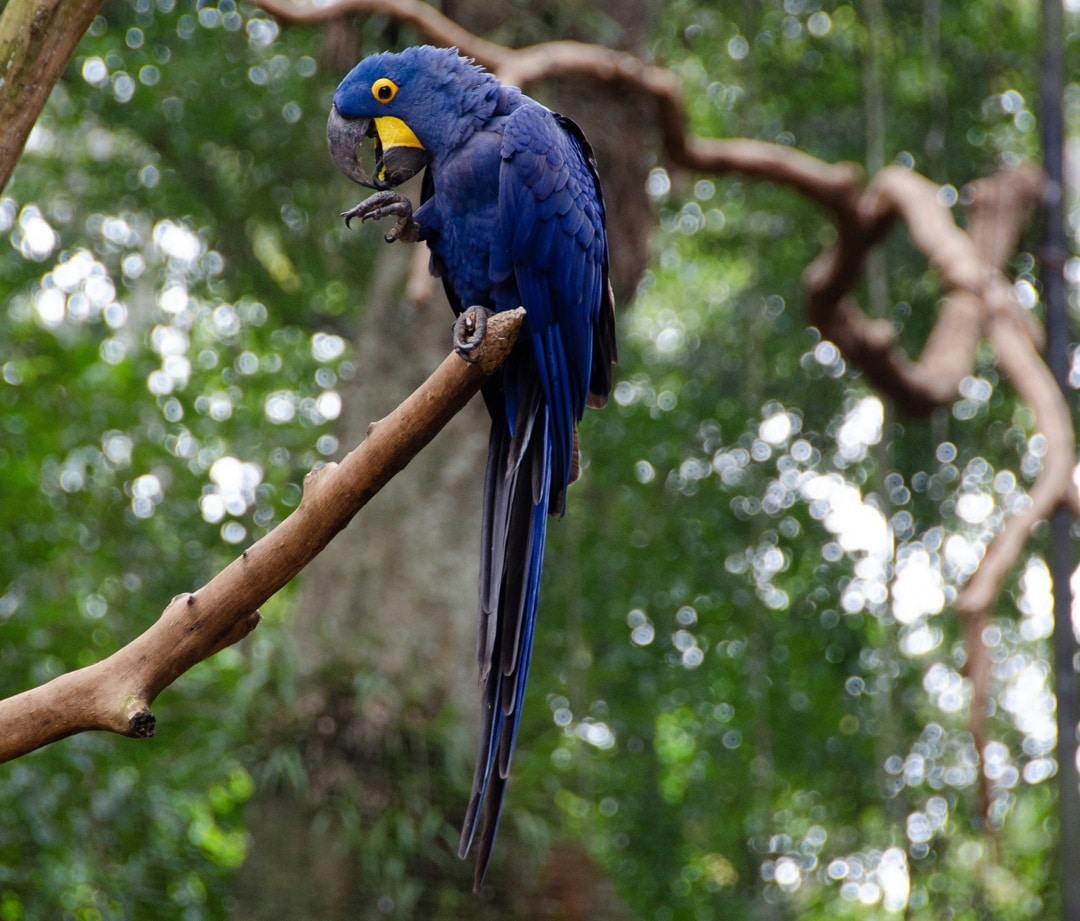
Weather in Iguazu National Park
Spring (September to November):
Average Temperature: 68°F to 86°F (20°C to 30°C)
Spring sees rising temperatures and is an excellent time to visit, as the park starts to become lush again after the dry season. Milder temperatures and fewer crowds make for a serene experience, thought here is a slightly higher chances of rain that may affect your activities
Summer (December to February):
Average Temperature: 75°F to 95°F (24°C to 35°C)
This is the wet season when the park experiences heavy rainfall, making the waterfalls more impressive but also causing humidity and possible flooding in some areas. The heat and humidity can be intense, and crowds are at their peak.
Autumn (March to May):
Average Temperatures: 68°F to 86°F (20°C to 30°C)
Autumn brings decreasing rainfall and pleasant temperatures. It’s a good time to visit to avoid the crowds and enjoy milder weather and tranquility as visitor numbers start to dwindle. I visited in April and had the best weather!
Winter (June to August):
Average Temperatures:: 54°F to 75°F (12°C to 24°C)
Winter is the dry season, with cooler temperatures. While it’s less crowded, the water levels in the falls can be lower during this time. It is a great time for birdwatching and exploring without the heat.
Iguazu National Park Entrance Fees (Argentina side) for foreign visitors
Adults: Approximately $39 USD
Children: Approximately $19 USD
Toddlers (under 6) Free
The fee includes access to the park, use of the Ecological Train and the ability to visit all the circuits. The park opens from 8:00 am to 6:00 pm, but you can only enter the park until 4:30 p.m.
Recommended Iguazu National Park Activities
Devil’s Throat Trail
Length: 2.2kms (1.4 miles)
Duration: 2 hours including time to view the falls
Take the Ecological Train to the Garganta del Diablo station. Follow the metal walkway over the water to the Devil’s Throat viewing platform and be prepared for the thunderous noise of the falls. Ensure your camera is waterproof, as the wind can bring occasional spray.
This accessible, flat path is the longest in the park. To secure space for photos, let the crowd move ahead by about 15 minutes after disembarking the train or plan on being on one of the first trains and get to the viewpoint as early as possible.
Hands down, this was the most amazing part part of my trip to Iguazu Falls.
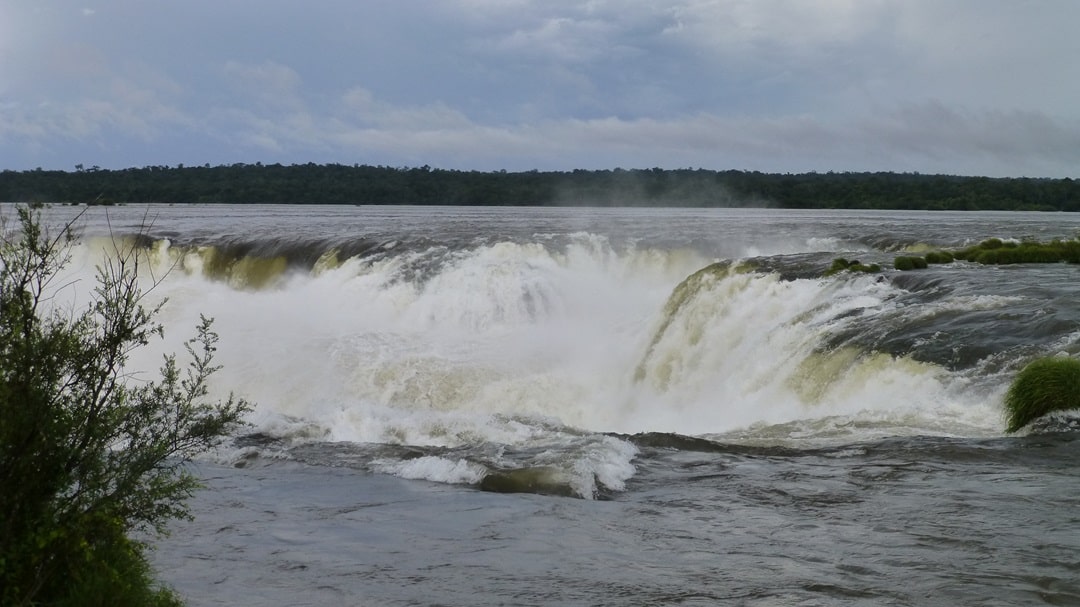
Upper (Superior) Circuit
Length: 1.75kms (1.1 miles)
Duration: 30-45 minutes, not including the time you stop to take pictures.
Accessed from the Cataratas Station, the entire trail is not only stunning but also quite manageable. Similar to Devils’ Throat, it features a flat walkway, but this one meanders through the lush scenery and along picturesque cliffs.
If you intend to savor the breathtaking vistas and capture numerous photos, you can easily find yourself spending well over an hour exploring this trail at a leisurely place.
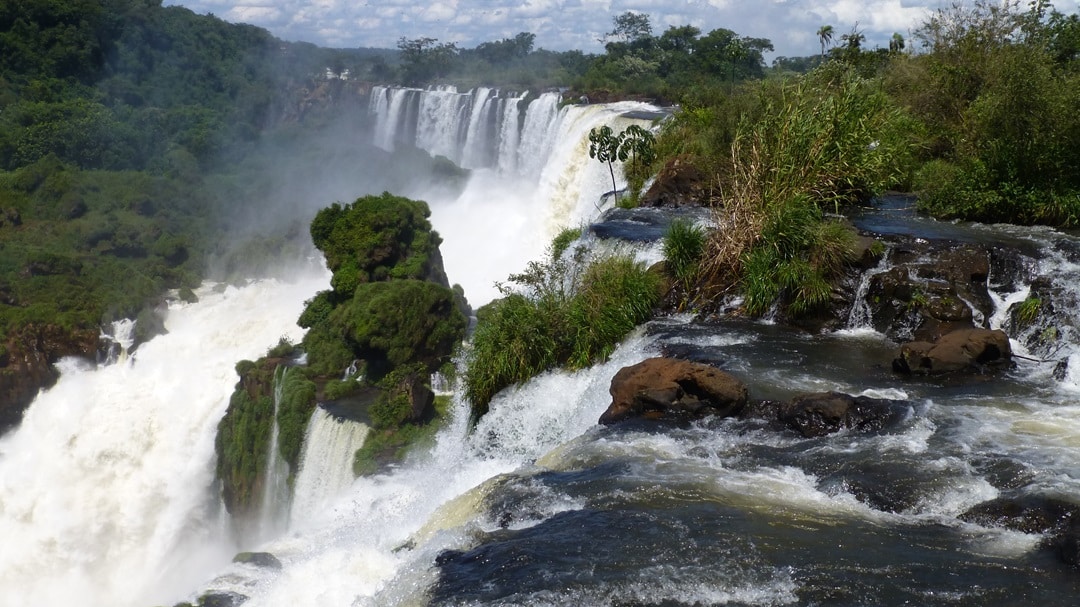
Lower Circuit
Length: 1.7 kms (1.1 miles)
Duration: 35-50 minutes walking, plus stops
Also accessed from the Cataratas Station,this trail offers a similar duration as the Upper Circuit due to occasional stops and photo opportunities. It’s mostly flat but does have some stairs and steeper sections. Allow just over an hour to walk the metal walkway.
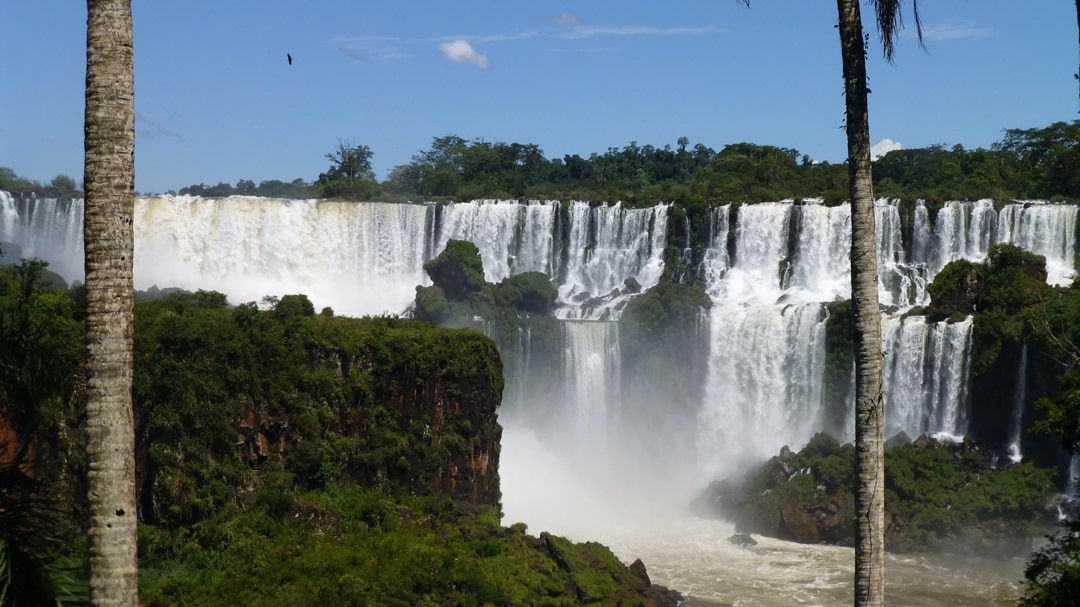
Green Trail
Length: 0.6kms (0.37 miles) one-way
Duration: 10 minutes
This pathway is accessed from Central Station and offers a brief and straightforward stroll that connects a square near the park’s entrance to the central station. You’ll likely traverse this route at least once during your visit to the Argentina side of the falls.
Helicopter Tour Over Iguazu Falls
For a truly unique perspective, take a helicopter ride over the falls. It’s a thrilling experience you’ll never forget. A helicopter tour over Iguazu Falls starts from the Brazil side of the Falls, so you will have to arrange a private transfer from your accommodations in Puerto Iguazu to the meeting point on the Brazil side.
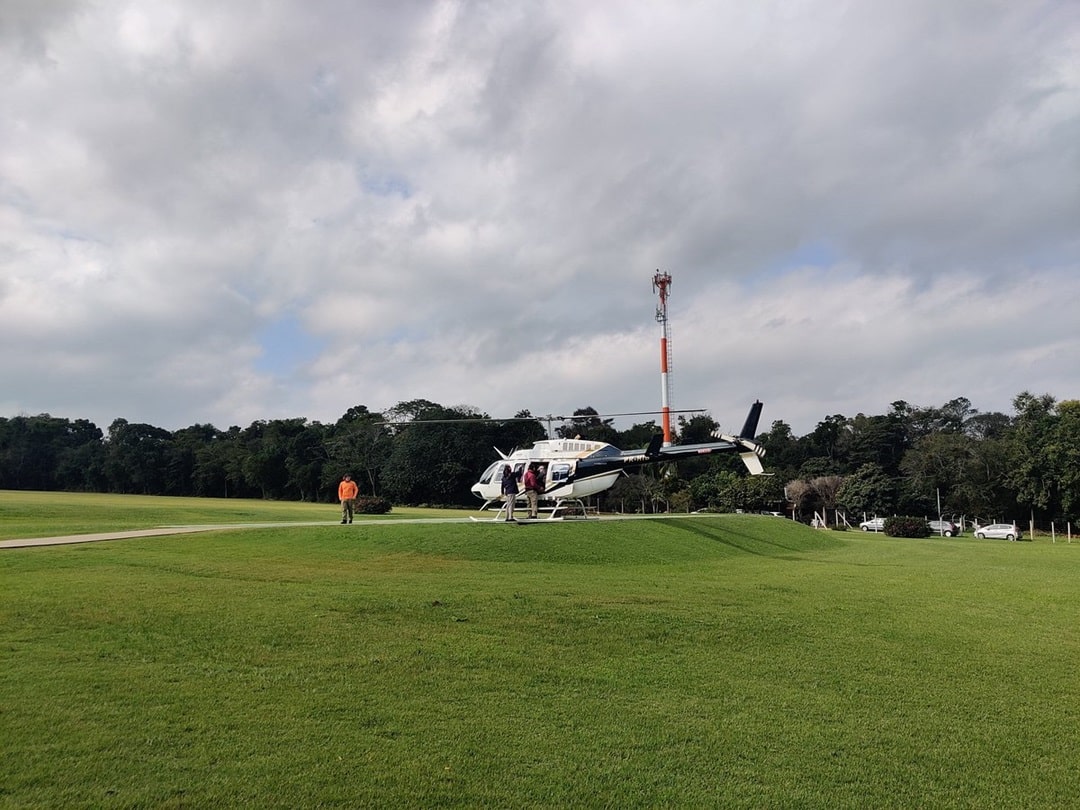
Boat Tours
Get up close and personal with the falls on a boat tour. Prepare to get wet and exhilarated as you sail right under the cascading water.
This memorable boat ride takes you to a few additional places in the park and you get some extra time to explore. I wish I had time to do this as it would have been a great experience.
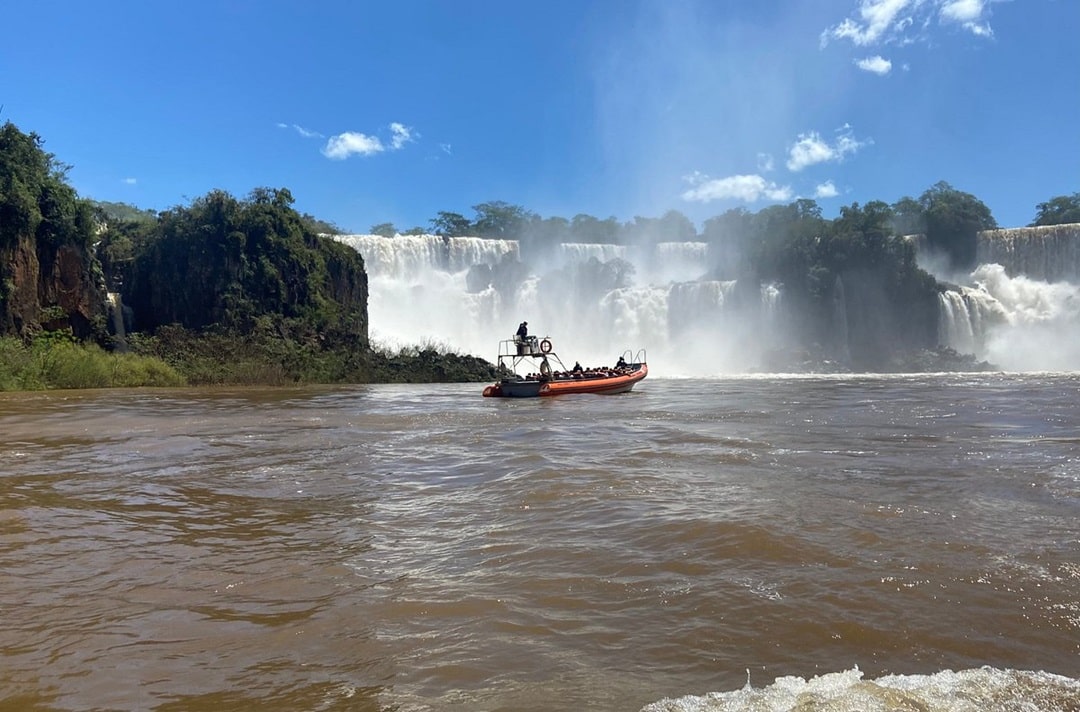
Birdwatching
With over 400 species of birds in Iguazu National Park, it is a paradise for birdwatchers. I am an avid birdwatcher and I saw 58 different species in one morning!
If you have the time and want to really see some of the amazing birds, then I highly recommend hiring Iguazu Birdwatching, as I used them when to find birds and they have access into the park before it opens.
If you are a nature lover and want to start birdwatching, this is a great place to learn and you will be amazed by what you see!
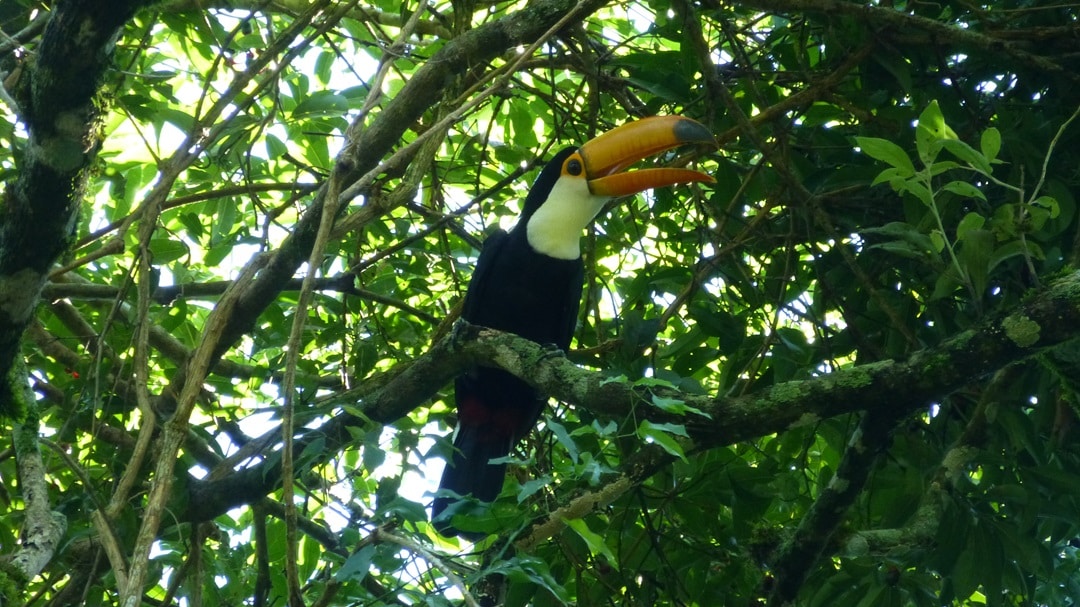
Tips for Visiting Iguazu National Park
Final Thoughts
Whether you’re a nature lover, adventure seeker, or simply someone in search of awe-inspiring beauty, Iguazu National Park activities are bound to leave an indelible mark on your heart. So, pack your bags, and embark on an unforgettable journey to Iguazu Falls. Let the mesmerizing falls and exhilarating jungle redefine your travel experience. Visit today, and be prepared to be awed by the sheer magnificence of this natural wonderland.
If you enjoyed my post, follow me on social media or subscribe to my newsletter below, so you can stay connected on future posts, trips, tips and more.


